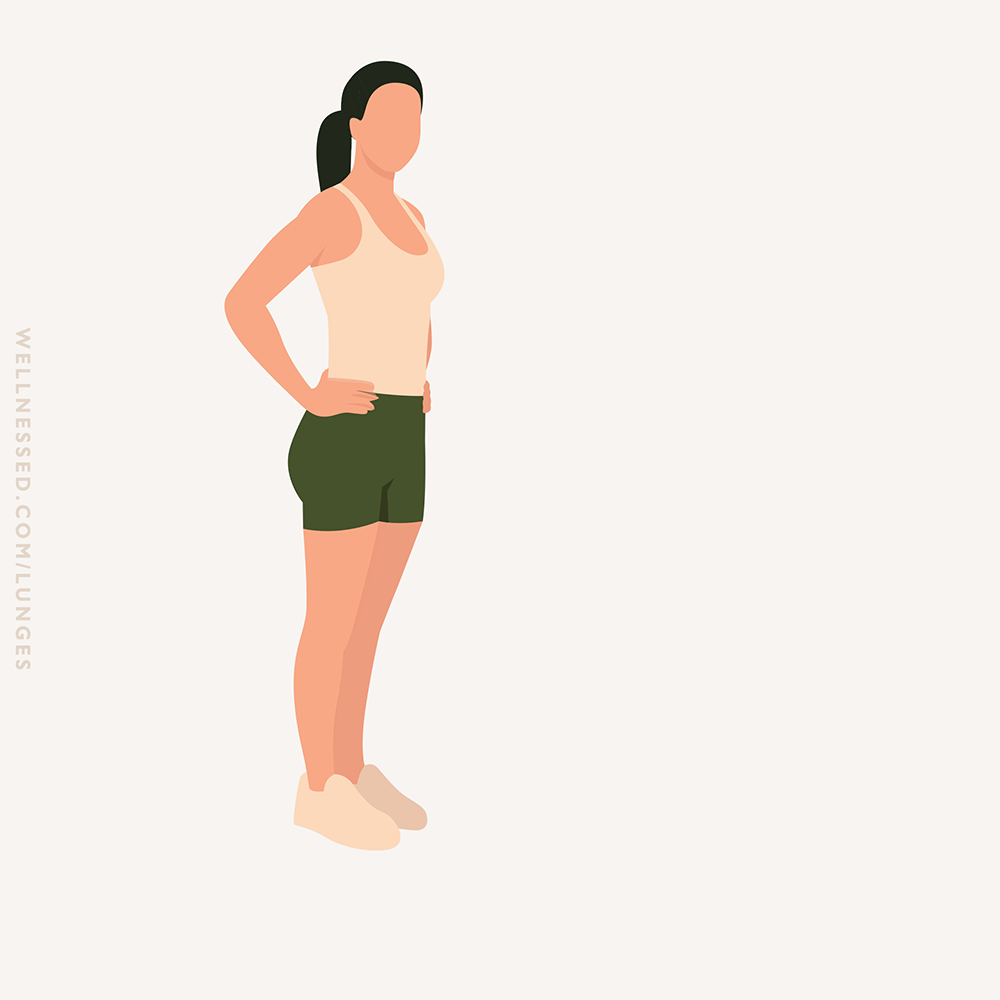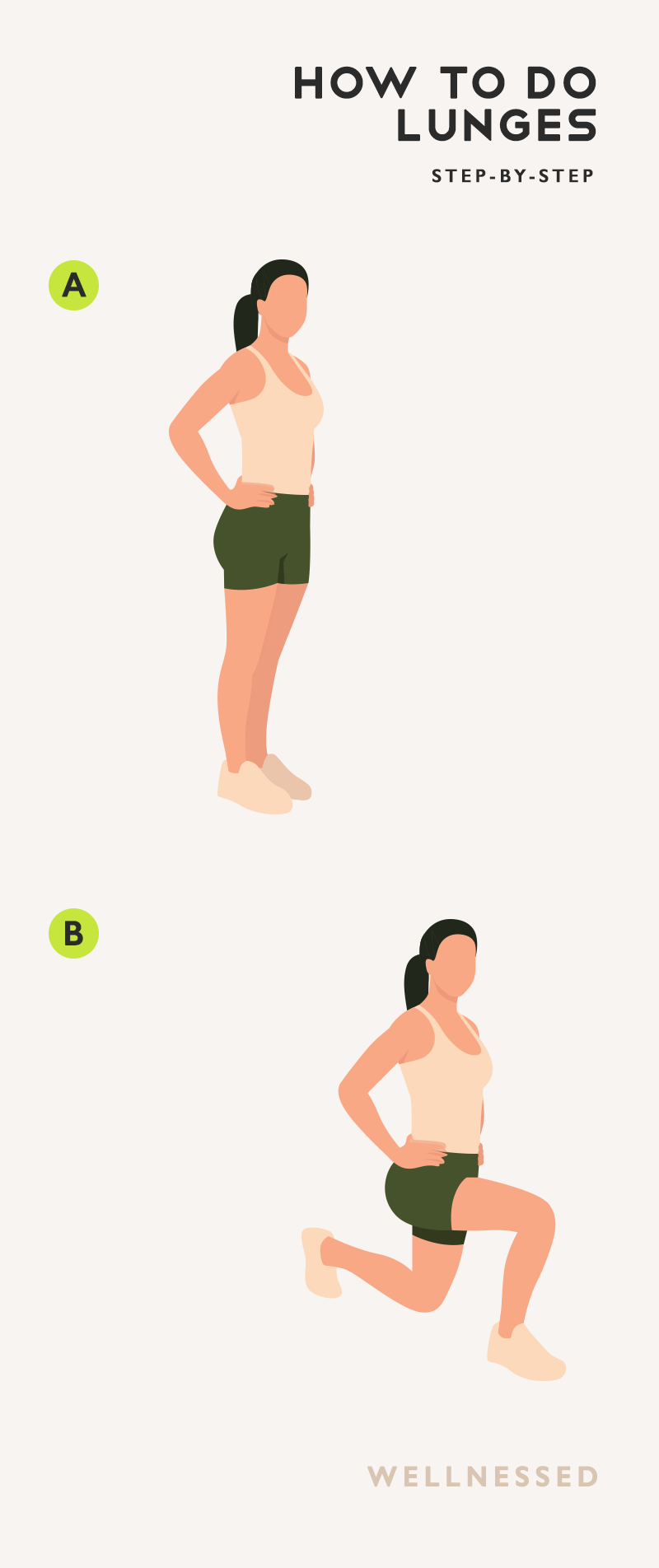- Main muscles worked: Thighs (hamstrings, quadriceps), butt (gluteus maximus), inner thigh (adductors)
- Other muscles: Calves (gastrocnemius, soleus), abs
- Exercise type: Compound exercise, unilateral
- Equipment: None
Lunges are one of the most versatile and beneficial exercises for the muscles of the lower body. It’s a foundational exercise that is a common part of many workouts.
Benefits of Lunges
Lunges are a functional and athletic move that develops balance, mobility, and leg strength and power. Lunges improve sports performance and also make the movements of everyday life easier. It’s an exercise that has carries over particularly well to running, and is part of most runner’s strength training plan.
Lunges are a unilateral exercise, meaning you work one leg at a time. This makes them useful for identifying and addressing left to right strength imbalances, for injury prevention, and for injury rehabilitation.
Lunges are quite technical so it’s important to do them right to reap maximum results and minimize injury risk. This exercise description is for the basic forward lunge, although most lung variations share similar characteristics and performance points.
The requirement for balance and the wide range of movement at the hip means that lunges are more challenging than simple leg presses, leg curls, or extensions.
Speak to your doctor or physical therapist before doing lunges if you have problems with your knees or hips, are unstable on your feet, very stiff though the hips, or have poor coordination. They might advise you to avoid lunges or modify them.
Tips
Lunges Common Mistakes
Get even more from lunges by avoiding a few common pitfalls and perfecting your technique with the following tips.
- Knees. Make sure your front shin is vertical and your knee never travels forward of your foot. This is increases the risk of knee injury.
- Torso. Keep your torso upright at all times. Leaning forward places an unnecessary stress on your lower back. To help keep your torso upright engage your abdominals, lift your chest, and ensure your shoulders are back and down.
- Hands. Keep your hands off your lead leg. Avoid using your arms to help push you up and out of the lunge.
- Direction. From the split stance, bend your legs and sink straight down rather than forward – this ensures you really work your muscles safely and thoroughly.
- Balance. Perform an equal number of repetitions for both legs
To make forward lunges more challenging you can add additional weight, such as dumbbells. Other advanced lunge variations add more movement or involve changing direction.
Some variations are very challenging, so take it slowly and always make sure you master the easier versions before moving on to more advanced lunges.



